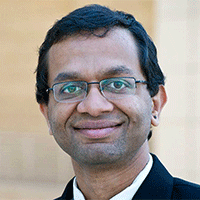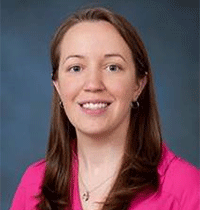Monday, October 7, 8:00 AM – 9:30 AM
Title: Failure-Oriented-Accelerated-Testing (FOAT) vs. Highly-Accelerated-Life-Testing (HALT) in Making a Viable Electron Device/Package into a Reliable Product
Tutorial Description: The almost forty years old HALT is currently widely employed, in different modifications, with an intent to determine an electronic product’s reliability weaknesses, assess the reliability limits, ruggedize the product by applying elevated stresses (not necessarily mechanical and not necessarily limited to the anticipated field stresses) that could cause field failures, and provide large (although, actually, unknown) safety margins over expected in-use conditions. HALT is as a “discovery” test that tries to “kill many unknown birds with one big stone”. HALT has demonstrated over the years its ability to improve product robustness through a “test-fail-fix” process, in which the applied stresses (“stimuli”) are somewhat above the specified operating limits. By doing that, HALT is able to precipitate and identify failures of different origins, ruggedize the product and to assess the reliability limits. Its end point is defined by the predetermined number or percent of failures and its follow up activity is failure (root cause) analysis. An ideal HALT is when no failures occur in a long time.
FOAT, on the other hand, is aimed at understanding the physics of failure, confirm the use of a particular predictive model and assess the probability of failure. Its end point is also defined by the predetermined number or percent (typically 50%) of failures. The follow-up activity is failure analysis and probabilistic analyses of the test data. An ideal FOAT is the one that is able to generate numerous failures in a short time. A highly focused and highly cost effective FOAT is the “heart” of the probabilistic-design-for-reliability (PDfR) concept. FOAT should be geared to an established predictive model. The recently suggested multi-parametric Boltzmann-Arrhenius-Zhurkov (BAZ) model can be employed as such a model.
The FOAT/PDfR/BAZ approach could be viewed as a “quantified and reliability physics oriented“ HALT. FOAT should be implemented, whenever feasible and appropriate, in addition to HALT. In some cases FOAT could be conducted even instead of HALT, especially for new materials and products, whose operational reliability is unclear and for which no experience is accumulated and no best practices exist.

Instructor: Ephraim Suhir
Biography: Ephraim Suhir is on the faculty of the Portland State University, Portland, OR, USA, Technical University, Vienna, Austria and James Cook University, Queensland, Australia. He is also CEO of a Small Business Innovative Research (SBIR) ERS Co. in Los Altos, CA, USA, is Foreign Full Member (Academician) of the National Academy of Engineering, Ukraine (he was born in that country); Life Fellow of the Institute of Electrical and Electronics Engineers (IEEE), the American Society of Mechanical Engineers (ASME), the Society of Optical Engineers (SPIE), and the International Microelectronics and Packaging Society (IMAPS); Fellow of the American Physical Society (APS), the Institute of Physics (IoP), UK, and the Society of Plastics Engineers (SPE); and Associate Fellow of the American Institute of Aeronautics and Astronautics (AIAA). Ephraim has authored 400+ publications (patents, technical papers, book chapters, books), presented numerous keynote and invited talks worldwide, and received many professional awards, including 1996 Bell Laboratories Distinguished Member of Technical Staff (DMTS) Award (for developing effective methods for predicting the reliability of complex structures used in AT&T and Lucent Technologies products), and 2004 ASME Worcester Read Warner Medal (for outstanding contributions to the permanent literature of engineering and laying the foundation of a new discipline “Structural Analysis of Electronic Systems”). Ephraim is the third “Russian American”, after S. Timoshenko and I. Sikorsky, who received this prestigious award. This year he received the 2019 IEEE Electronic Packaging Society (EPS) Field award for seminal contributions to mechanical reliability engineering and modeling of electronic and photonic packages and systems.
Tuesday, October 8, 8:00 AM – 9:30 AM
Title: Thermo-electrochemical coupling and interactions in Li-ion cells
Tutorial Description: Li-ion cells are used extensively for energy storage in a broad variety of engineering applications. A fundamental understanding of coupled thermal and electrochemical transport in Li-ion cells is very important for optimizing performance and ensuring safety. This tutorial will present the fundamentals of heat transfer and electrochemical mechanisms in a Li-ion cell. Heat generation and dissipation within the cell will be discussed. A variety of thermal management approaches investigated in the recent past will be presented. Safety of Li-ion cells in the context of thermal runaway will be presented. Fundamentals of electrochemical characterization of a Li-ion cell will be presented. The intricate coupling between thermal and electrochemical transport phenomena will be highlighted. Material presented in this tutorial may help attendees gain a fundamental understanding of Li-ion cells and various aspects related to performance and safety.
Instructors: Ankur Jain and Partha Mukherjee

Biographies: Ankur Jain is an Associate Professor in the Mechanical and Aerospace Engineering Department at the University of Texas, Arlington, USA. He directs the Microscale Thermophysics Laboratory (www.uta.edu/mtl), which carries out experimental and theoretical research on heat transfer and energy conversion in Li-ion batteries, microscale thermal transport, bioheat transfer, microelectromechanical systems, etc. He received the Lockheed Martin Excellence in Teaching Award (2018), UTA College of Engineering Outstanding Early Career Award (2017), NSF CAREER Award (2016) and the ASME EPP Division Young Engineer of the Year Award (2013). Dr. Jain was among a small group of US-based researchers invited by the US National Academy of Sciences to participate in the 5th Arab-American Frontiers of Science, Engineering, and Medicine Symposium in 2017. He received his Ph.D. (2007) and M.S. (2003) in Mechanical Engineering from Stanford University, where he received the Stanford Graduate Fellowship (SGF) and his B.Tech. (2001) in Mechanical Engineering from the Indian Institute of Technology (IIT), Delhi with the highest GPA among the class of Mechanical Engineering. He has published 53 high quality journal articles on topics related to energy conversion and heat transfer in batteries, microelectronics and biological systems. His research has been supported by National Science Foundation, Department of Energy, Office of Naval Research, Indo-US Science & Technology Forum, etc.

Partha P. Mukherjee is currently an Associate Professor of Mechanical Engineering at Purdue University. Before joining Purdue, he was an Assistant Professor and Morris E. Foster Faculty Fellow of Mechanical Engineering at Texas A&M University (TAMU). Prior to starting his academic career at TAMU in 2012, he worked for four years in the U.S. Department of Energy Labs; a staff scientist (2009-2011) at Oak Ridge National Laboratory, and a Director’s research fellow (2008-2009) at Los Alamos National Laboratory. He received his Ph.D. in Mechanical Engineering from the Pennsylvania State University in 2007. Prior to PhD studies, he worked as an engineer for four years at Fluent India Pvt. Ltd, a fully-owned subsidiary of Fluent Inc., currently Ansys Inc. His research interests are focused on mesoscale physics and stochastics of transport, chemistry and interface interactions, including an emphasis in the broad spectrum of energy storage and conversion.
Wednesday, October 9, 8:00 AM – 9:30 AM
Title: ARL ParaPower Tutorial
Tutorial Description: This tutorial will demonstrate the open-sourced ARL ParaPower tool which has been designed to aid in design space analysis. After defining the problem, the typical process includes back-of-the-envelope calculations which are limited in their accuracy, ability to understand large parametric spaces, and ability to address multiple domains. Therefore, the ARL ParaPower tool has been developed to address this critical capability gap. ARL ParaPower is capable of quickly, holistically, and parametrically exploring a large design space to aid in assessing the impact of layout, dimension, and material choices. This tutorial will introduce the governing equations of the tool, demonstrate how to use the MATLAB based GUI, and demonstrate its use in a few applications. It has been shown to be useful for the following applications: (1) quick “What if?” calculations, (2) parametric sweeps, (3) teaching tool, (4) proposal review, and (5) integration with other tools for system-of-systems analysis. ARL ParaPower can do steady state, transient, and solid-liquid phase change analysis of a wide variety of rectilinear geometries.
Instructor: Dr. Lauren Boteler, U.S. Army Research Laboratory (ARL) Washington, DC

Biography: Dr. Lauren Boteler leads the thermal and packaging research programs as part of the Advanced Power Electronics group at the U.S. Army Research Laboratory (ARL). She received her PhD degree in mechanical engineering from the University of Maryland. Her work at ARL, beginning in 2005, has included electronics packaging and thermal management solutions for a wide range of Army applications. Her research programs focus on design tool development and package integrated thermal solutions including 3D chip stacking, power electronics, laser diodes, double side cooling, and phase change materials. More recently, she has initiated a research program in Advanced Power Electronics Packaging and Thermal Management which defines the four main challenges of power electronics packaging: co-engineering/co-design, transient thermal mitigation, additive manufacturing, and high-voltage packaging. She is an adjunct professor at Johns Hopkins University and was awarded the 2018 ASME EPPD Woman Engineer of the Year award for her contributions to the electronics packaging community.